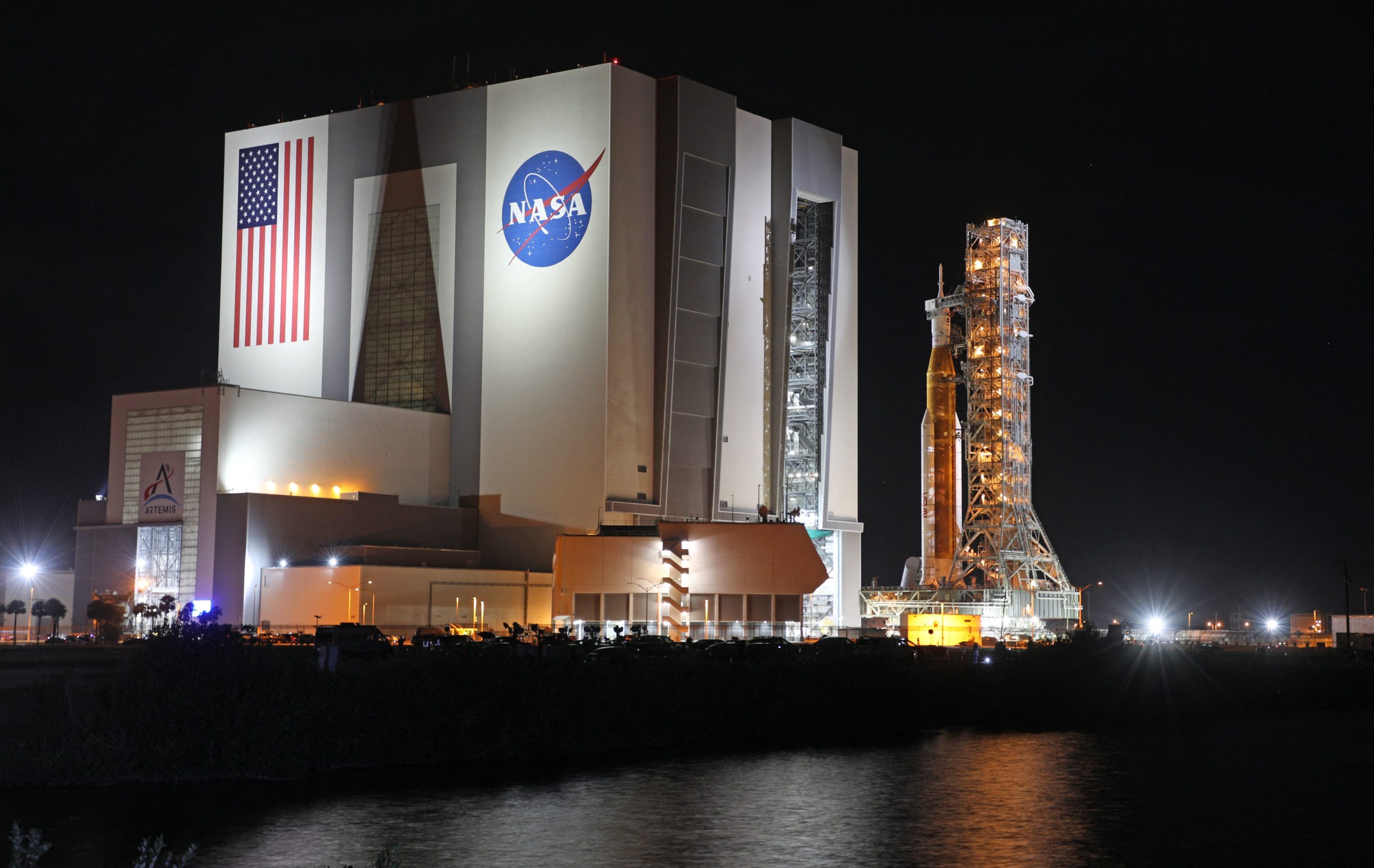With a tropical system bearing down on the Sunshine State, NASA has decided to leave the $4.1 billion Artemis 1 rocket on the Cape Canaveral launch pad.
This decision has left some worried that the anticipated launch of this rocket may be delayed indefinitely if it receives damage, but NASA is confident that it will be fine.
NASA’s $4.1 billion Artemis I mission now faces a 1-in-10 chance of seeing hurricane-force winds from Nicole, which are above its safety threshold.https://t.co/0m9YTPTPUX
— Eric Berger (@SciGuySpace) November 8, 2022
NASA’s Artemis I mega moon rocket could face damaging winds from Tropical Storm Nicole, which is expected to strengthen into a hurricane before it slams into Florida’s East Coast https://t.co/5j29SUDx6G
— CNN (@CNN) November 8, 2022
According to a Tuesday blog post, the space agency stated that they are “working with U.S. Space Force and the National Hurricane Center to monitor Subtropical Storm Nicole.”
“NASA’s Kennedy Space Center in Florida is currently in a HURCON (Hurricane Condition) IV status, which includes implementing checklists and preparations for the storm as the agency continues to prioritize its employees in the Kennedy area.”
The post goes on to say that the rocket will be evaluated whether Artemis I is capable of a launch on Monday, Nov. 14.
The Artemis I is NASA’s latest step in its efforts to eventually return to the moon after a nearly 50-year absence from the lunar surface.
According to the New York Post, Artemis I’s mission is to send an empty capsule to orbit around the moon, before sending a manned mission in 2025.
Unfortunately, the mission has been delayed twice since August, once by a fuel leak and the other by Hurricane Ian back in September.
The concern now is whether NASA made the right decision to keep the highly anticipated and expensive craft exposed to the oncoming Tropical Storm Nicole.
According to the technology site ArsTechnica, NASA engineer John Blevins said Artemis can handle wind gusts up to 85 mph, though sustained winds may be another issue entirely.
NASA weighed the risk of keeping the rocket where it is mostly because of the possible wear and tear of transporting the massive rocket.
Artemis I would have to be rolled back four miles to its hangar and NASA has a budget for such rollouts; not to mention it takes a couple of days to safely set up the rocket on the pad, according to ArsTechnica.
According to ABC News, Nicole was expected to hit Florida’s east coast Wednesday night as a Category 1 hurricane, with sustained winds up to 95 mph. As Nicole graduates to Category 1 status, NASA runs the risk of underestimating the storm’s strength, causing potential damage to this important piece of the agency’s plans.
Weather forecasters have been issuing warnings:
*** BE WHERE YOU NEED TO BE BY 5 PM ***
For safety, please be where you need to be for Nicole by 5 PM. Power outages are being reported, and trees/tree branches could fall in these winds this afternoon. After the sun goes down, conditions deteriorate quickly… (1/2) pic.twitter.com/WSQAGwazvG
— Brian Shields, WFTV (@BrianWFTV) November 9, 2022
As reported by the Orlando Sentinel, the acting head of the National Hurricane Center, Michael Brennan, stated Wednesday that, “we’re expecting the storm to go on and become a hurricane later today or tonight and make landfall as a hurricane along the east-central Florida coast somewhere in the vicinity from Palm Beach up to the Treasure Coast late tonight or early Thursday.”
Parts of the cost are already experiencing power outages and large sections of the Florida east coast are under evacuation orders.
This article appeared originally on The Western Journal.















 Continue with Google
Continue with Google